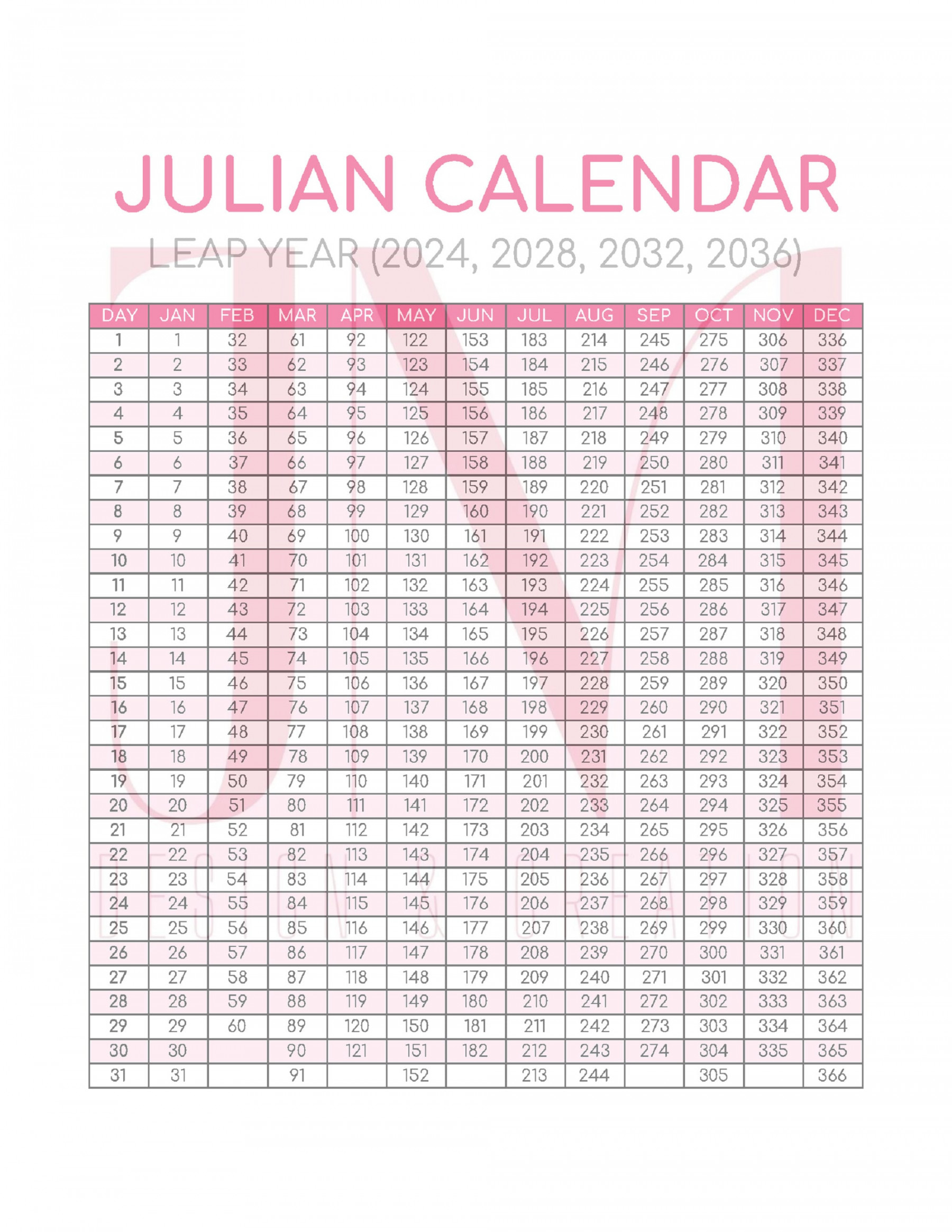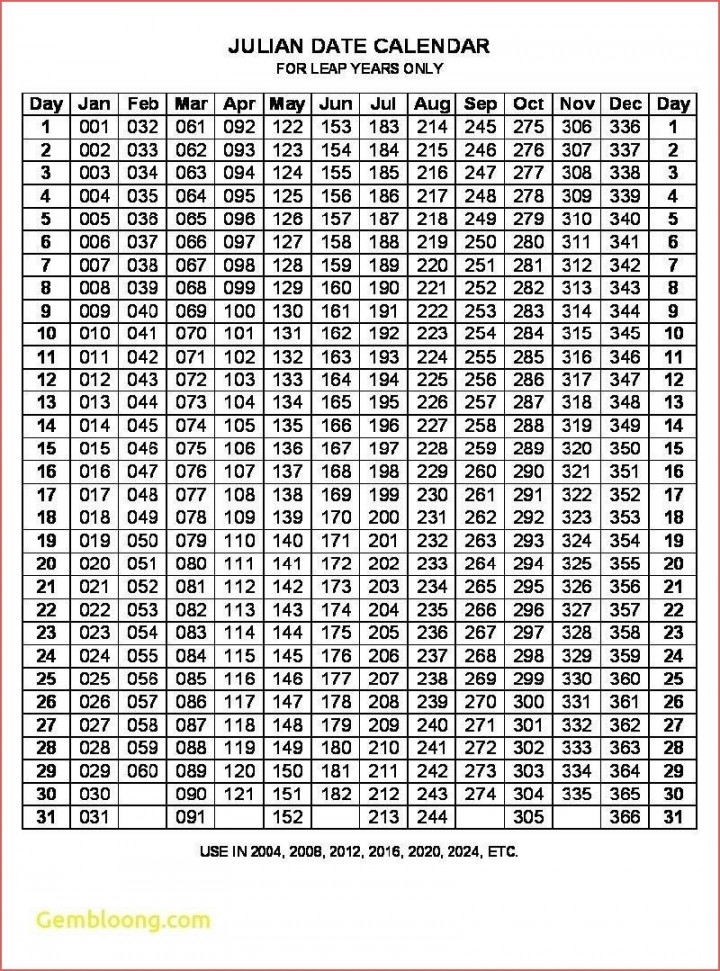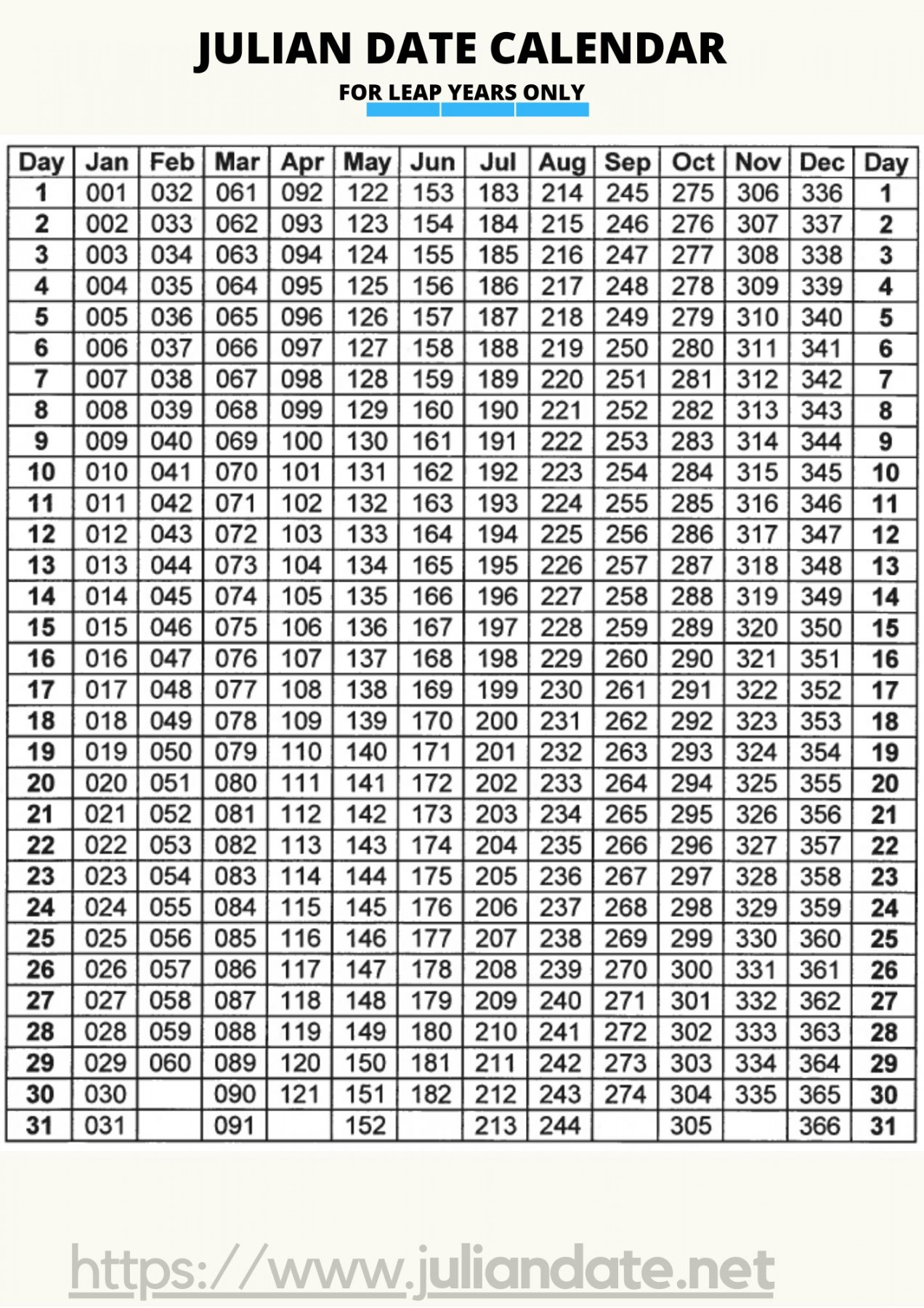Julian Date Leap Year Calendar: Cracking the Code of Timekeeping
Ever stumbled upon a strange number sequence while digging through historical records? That cryptic code might be a Julian date, a calendar system used for centuries and still employed in specific contexts today. But before we decipher its secrets, let’s unwrap the mysteries behind leap years and the Julian calendar itself.

What in the Leap is a Leap Year?
Imagine Earth, hurtling around the sun in a slightly wonky orbit. It actually takes 365.2422 days to complete one full loop, not a neat 365. This discrepancy throws off a standard 365-day calendar over time, like a clock losing a few seconds every day. To compensate, we have leap years – every four years, we throw in an extra day (February 29th) to keep things in sync.

The Julian Calendar: Time Before Timezones
The Julian calendar, introduced by Julius Caesar in 46 BC, was a revolutionary step towards order. It ditched the chaotic lunar calendar system and embraced a sun-based one, with 365 days in a regular year and a leap day every four years. Simple, right? Well, not quite.

Remember that slight discrepancy between Earth’s orbit and the calendar? Over time, the Julian calendar drifted out of sync by about 11 minutes each year. By the 16th century, this accumulated lag had thrown Easter celebrations completely off whack!
The Gregorian Rescue Mission

Enter the Gregorian calendar, a refined version of the Julian system introduced in 1582. It tweaked the leap year rules, skipping three leap years every 400 years to better match Earth’s actual orbit. This super-precise system is the one we use today, keeping our clocks and calendars in harmony with the heavens.
Julian Date: Where Time Becomes a Number
So, back to that cryptic Julian date. This ingenious system assigns every single day since January 1, 4713 BC a unique numerical value. It’s like a universal time stamp, independent of calendars or time zones. Think of it as a cosmic odometer tracking Earth’s journey through time.
Leap years add a wrinkle to the calculation, but don’t worry, there are handy formulas and online tools to decode the Julian date. Why use such a complex system? Well, for astronomers, historians, and anyone dealing with long-term timelines, the Julian date offers a consistent, unambiguous way to pinpoint events across millennia.
Beyond the Basics: Julian Date in Action
The Julian date isn’t just a dusty relic of the past. It’s still used in scientific fields like astronomy and space exploration, where precise timekeeping is crucial. Historians also rely on it to accurately compare events across different calendar systems. And for some religious communities, the Julian calendar remains the official timekeeper, keeping traditions alive.
In Conclusion: Cracking the Code of Time
The Julian date leap year calendar might seem like an arcane system at first glance, but it’s a testament to human ingenuity. It’s a reminder that timekeeping isn’t just about ticking clocks and calendar pages, but about understanding the intricate relationship between our planet and the vast cosmic dance around us. So, the next time you encounter a Julian date, don’t shy away – unravel its code, and you might just unlock a deeper understanding of time itself.
5 Unique FAQs about the Julian Date Leap Year Calendar:
1. How do I calculate a Julian date? There are formulas and online tools available to help. Just plug in the date you want to convert, and watch the magic happen!
2. Is the Julian calendar still used anywhere? Yes, some religious communities and historical contexts still employ the Julian calendar.
3. What’s the difference between a Julian date and a Unix timestamp? Both are numeric representations of time, but Julian dates are continuous and start from a specific point in history, while Unix timestamps are relative to a fixed starting point (January 1, 1970).
4. Can I learn more about the history of calendars? Absolutely! Dive into the fascinating world of calendar systems with a quick Google search or explore books dedicated to the topic. You might be surprised at the variety and ingenuity across different cultures and times.
5. Why is keeping track of time so important? Time is the fabric of our universe, the framework for our lives. Accurately measuring and understanding it allows us to plan, organize, and connect with each other across space and time.
Whether you’re an SEO guru crafting content for the ages or simply curious about the dance of time, the Julian date leap year calendar offers a fascinating glimpse into the history and future of timekeeping. So, go forth, explore, and unravel the mysteries of time itself!